On 15th December 2013, the State Secretary of Finance ordered a national decree regarding fiscal representation in the Netherlands for VAT purposes. The issue of this updated decree didn’t bring any substantial changes, according to the minister…
The Netherlands – fiscal representation in the Netherlands – possibility to lower the amount of the bank guarantee, set with the Dutch Tax and Customs Administration (‘DTCA’)
On 15th December 2013, the State Secretary of Finance ordered a national decree regarding fiscal representation in the Netherlands for VAT purposes. The issue of this updated decree didn’t bring any substantial changes, according to the minister.
Since 1st January 1993, a foreign entrepreneur may appoint a VAT representative in case he performs VAT relevant transactions and he prefers not to be registered for VAT purposes via his own entity (for example a permanent establishment for VAT purposes).
In the Netherlands, two kinds of VAT representation can be distinguished, namely by means of general license or limited license. In short, the differences appear when it comes to responsibilities and liabilities of the fiscal representative. It is the fiscal representative who needs to apply for a license. However, he needs to be authorised by the foreign entrepreneur beforehand.
One of the items to deal with, before a unique Dutch VAT identification number is issued to the fiscal representative with a general license, is the bank guarantee. The amount is to be decided on by the competent tax inspector of the DTCA. In the past, under previous issues of the national decree regarding fiscal representation, it was at the discretion of the competent tax inspector to set the amount of the bank guarantee. He based the guarantee on the average amount of VAT each quarter or, when this was higher, each month, due on taxable transactions (excluding exempted and zero-rated transactions).
In the updated decree of 15th December 2013, the State Secretary ordered in paragraph 6.4 so-called “standards” for the tax inspector in order to decide on the amount of the bank guarantee. The minister does not only distinguish separate categories for different goods, but also a minimum and maximum amount. Please find the table below:
|
A. Category of goods |
B. Percentage |
C. Minimum amount |
D. Maximum amount |
|
1. Bulk, semi-manufactured products and means of production |
5% |
€ 5.000,- |
€ 100.000,- |
|
2. Goods for consumption purposes |
5% |
€ 5.000,- |
€ 500.000,- |
Explanation on the table per column:
- A. Category of goods: before determining on the height of the bank guarantee, one should consider the type of goods, which are supplied for Dutch VAT purposes. If there are doubts which category is applicable, the goods do fall under the second category, according to the minister.
- B. Percentage: the bank guarantee to be set with the DTCA amounts per license issued to 5% of the average VAT amount due each quarter/month (general license) or each month (limited license).
- C. Minimum amount: for “category 1” goods as well as for “category 2” goods, the minimum is € 5.000,-. One should consider this as “starting fee” for fiscal representatives in the Netherlands.
- D. Maximum amount: for “category 1” goods and for “category 2” goods, the maximum amount is € 100.000,- respectively € 500.000,-.
To conclude, represented foreign entrepreneurs should look up in their administration whether their current bank guarantees, set in the past with the competent tax inspector, raise the possibility to lower this amount and, in relation to this, to receive a ‘refund’ of “the surplus”.
Source (in Dutch language): https://zoek.officielebekendmakingen.nl/stcrt-2013-35891.html
Paul Cramer
VATForce BV

